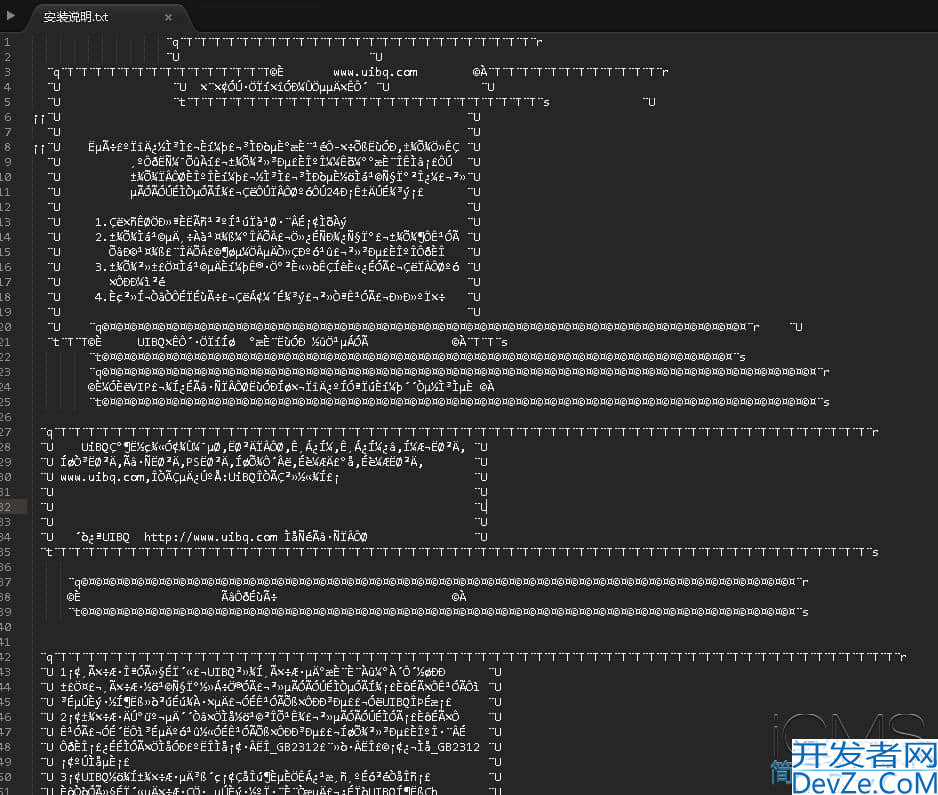使用Spring Data MongoDB进行地理位置相关查询的步骤和示例
目录
- 核心概念:
- 步骤详解:
- 步骤 1: 添加依赖
- 步骤 2: 定义实体 (Entity)
- 步骤 3: 创建 Repository 接口
- 步骤 4: 使用 Repository 或 MongoTemplate 进行查询
- 总结与要点:
以下是如何使用 Spring Data MongoDB 进行地理位置相关查询的步骤和示例:
核心概念:
- GeojsON 对象: MongoDB 推荐使用 GeoJSON 格式来存储地理位置数据。Spring Data MongoDB 提供了相应的 GeoJSON 类型,如
GeoJsonPoint,GeoJsonPolygon,GeoJsonLineString等。GeoJsonPoint: 表示一个点,例如[longitude, latitude]。
- 地理空间索引 (Geospatial Index): 为了高效地执行地理位置查询,必须在存储位置数据的字段上创建地理空间索引。
2dsphere: 支持球面几何计算,适用于地球表面的经纬度数据(推荐)。2d: 支持平面几何计算,适用于二维平面上的点。
- 查询操作符: MongoDB 提供了多种地理位置查询操作符:
$near/$nearSphere: 查找靠近某个点的文档,并按距离排序。$geoWithin: 查找几何形状(如多边形、圆形)内的文档。$geoIntersects: 查找与指定 GeoJSON 对象相交的文档。$centerSphere(与$geoWithin结合使用): 定义一个球心和半径的圆形区域进行查询。
步骤详解:
步骤 1: 添加依赖
确保你的 pom.XML (Maven) 或 build.gradle (Gradle) 文件中包含 Spring Data MongoDB 的依赖:
<!-- pom.xml (Maven) -->
<dependency>
<groupId>org.springframework.boot</groupId>
<artifactId>spring-boot-starter-data-mongodb</artifactId>
</dependency>
步骤 2: 定义实体 (Entity)
在你的实体类中,使用 org.springframework.data.mongodb.core.geo.GeoJsonPoint (或其他 GeoJSON 类型) 来存储位置信息。
import org.springframework.data.annotation.Id;
import org.springframework.data.mongodb.core.geo.GeoJsonPoint;
import org.springframework.data.mongodb.core.index.GeoSpatialIndexType;
import org.springframework.data.mongodb.core.index.GeoSpatialIndexed;
import org.springframework.data.mongodb.core.mapping.Document;
@Document(collection = "locations")
public class LocationEntity {
@Id
private String id;
private String name;
// 存储经纬度信息,并创建 2dsphere 索引
@GeoSpatialIndexed(type = GeoSpatialIndexType.GEO_2DSPHERE)
private GeoJsonPoint location; // [longitude, latitude]
public LocationEntity() {}
public LocationEntity(String name, GeoJsonPoint locati编程客栈on) {
this.name = name;
this.location = location;
}
// Getters and Setters
public String getId() {
return id;
}
public void setId(String id) {
this.id = id;
}
public String getName() {
return name;
}
public void setName(String name) {
this.name = name;
}
public GeoJsonPoint getLocation() {
return location;
}
public void setLocation(GeoJsonPoint location) {
this.location = location;
}
@Override
public String toString() {
return "LocationEntity{" +
"id='" + id + '\'' +
", name='" + name + '\'' +
", location=" + (location != null ? location.getCoordinates() : null) +
'}';
}
}
注意:
@GeoSpatialIndexed(type = GeoSpatialIndexType.GEO_2DSPHERE)注解会自动在location字段上创建2dsphere索引。这是进行地理位置查询的关键。- GeoJSON 点的坐标顺序是
[longitude, latitude](经度在前,纬度在后)。
步骤 3: 创建 Repository 接口
Spring Data MongoDB 可以通过方法名派生查询,或者使用 @Query 注解自定义查询。
import org.springframework.data.geo.Distance;
import org.springframework.data.geo.Point;
import org.springframework.data.geo.Polygon;
import org.springframework.data.mongodb.repository.MongoRepository;
import Java.util.List;
public interface LocationRepository extends MongoRepository<LocationEntity, String> {
// 1. 查找靠近某个点的文档 (使用 $nearSphere)
// Spring Data 会自动使用 $nearSphere 因为索引是 2dsphere
// Point 来自 org.springframework.data.geo.Point (x=longitude, y=latitude)
// Distance 来自 org.springframework.data.geo.Distance
List<LocationEntity> findByLocationNear(Point point, Distance distance);
// 也可以只按点查找,不限制距离 (结果按距离排序)
List<LocationEntity> findByLocationNear(Point point);
// 2. 查找在指定多边形内的文档 (使用 $geoWithin)
// Polygon 来自 org.springframework.data.geo.Polygon
List<LocationEntity> findByLocationWithin(Polygon polygon);
// 3. 查找在指定圆形区域内的文档 (使用 $geoWithin 和 $centerSphere)
// Circle 来自 org.springframework.data.geo.Circle
// Spring Data 会将其转换为 $geoWithin 与 $centerSphere
List<LocationEntity> findByLocationWithin(org.springframework.data.geo.Circle circle);
// 4. 查找与指定 GeoJSON 几何图形相交的文档 (使用 $geoIntersects)
// 需要使用 MongoTemplate 或 @Query 来实现更复杂的 GeoJSON 相交查询,
// 因为派生查询对 $geoIntersects 的支持有限,尤其是对于复杂的 GeoJSON 输入。
// 但简单的 Point 相交可以。
// 对于更复杂的 GeoJSON (如 Polygon)编程客栈,通常使用 MongoTemplate 或 @Query
// List<LocationEntity> findByLocationIntersects(GeoJson geometry); // 示例,可能需要自定义实现
}
使用的 Spring Data Geo 类型:
org.springframework.data.geo.Point: 用于查询参数,表示一个点 (x 对应经度, y 对应纬度)。org.springframework.data.geo.Distance: 用于指定距离,可以包含单位 (如Metrics.KILOMETERS)。org.springframework.data.geo.Polygon: 用于查询参数,表示一个多边形。org.springframework.data.geo.Circle: 用于查询参数,表示一个圆形。org.springframework.data.geo.Box: 用于查询参数,表示一个矩形。
步骤 4: 使用 Repository 或 MongoTemplate 进行查询
import org.springframework.beans.factory.annotation.Autowired;
import org.springframework.data.geo.*;
import org.springframework.data.mongodb.core.MongoTemplate;
import org.springframework.data.mongodb.core.geo.GeoJsonPoint;
import org.springframework.data.mongodb.core.geo.GeoJsonPolygon;
import org.springframework.data.mongodb.core.query.Criteria;
import org.springframework.data.mongodb.core.query.Query;
import org.springframework.stereotype.Service;
import jakarta.annotation.PostConstruct;
import java.util.Arrays;
import java.util.List;
@Service
public class LocationService {
@Autowired
private LocationRepository locationRepository;
@Autowired
private MongoTemplate mongoTemplate;
@PostConstruct
public void init() {
locationRepository.deleteAll(); // 清理旧数据
// 插入一些示例数据
// 故宫 (116.403963, 39.915119)
locationRepository.save(new LocationEntity("Forbidden City", new GeoJsonPoint(116.403963, 39.915119)));
// 天安门广场 (116.3912757, 39.9037078)
locationRepository.save(new LocationEntity("Tiananmen Square", new GeoJsonPoint(116.3912757, 39.9037078)));
// 颐和园 (116.275136, 39.999077)
locationRepository.save(new LocationEntity("Summer Palace", new GeoJsonPoint(116.275136, 39.999077)));
// 东方明珠 (121.499718, 31.239703)
locationRepository.save(new LocationEntity("Oriental Pearl Tower", new GeoJsonPoint(121.499718, 31.239703)));
}
public void performGeoQueries() {
System.out.println("--- Performing Geo Queries ---");
// 中心点: 北京市中心附近 (例如王府井 116.417427, 39.913904)
Point centerPoint = new Point(116.417427, 39.913904); // longitude, latitude
// 1. 查找王府井附近 5 公里内的地点
Distance fiveKilometers = new Distance(5, Metrics.KILOMETERS);
List<LocationEntity> nearWangfujing = locationRepository.findByLocationNear(centerPoint, fiveKilometers);
System.out.println("\nLocations near Wangfujing (5km):");
nearWangfujing.forEach(System.out::println); // 应该包含故宫和天安门
// 2. 查找在指定多边形内的地点 (大致覆盖北京二环内)
// 注意:多边形的点必须形成闭合环路,且第一个点和最后一个点相同
Polygon beijingRing2 = new Polygon(
new Point(116.30, 39.85), //西南
new Point(116.50, 39.85), //东南
new Point(116.50, 39.95), //东北
new Point(116.30, 39.95), //西北
new Point(116.30, 39.85) //闭合
);
List<LocationEntity> withinBeijingRing2 = locationRepository.findByLocationWithin(beijingRing2);
System.out.println("\nLocations within Beijing Ring 2 (approx):");
withinBeijingRing2.forEach(System.out::println); // 应该包含故宫和天安门
// 3. 查找在指定圆形区域内的地点 (以故宫为圆心,2公里为半径)
Point forbiddenCityCoords = new Point(116.403963, 39.915119);
Distance twoKilometers = new Distance(2, Metrics.KILOMETERS);
// 对于2dsphere索引, Circle的距离单位会被正确处理 (例如转换为弧度)
Circle aroundForbiddenCity = new Circle(forbiddenCityCoords, twoKilometers);
List<LocationEntity> withinCircle = locationRepository.findByLocationWithin(aroundForbiddenCity);
System.out.println("\nLocations within 2km of Forbidden City:");
withinCircle.forEach(System.out::println); // 应该包含故宫和天安门
// 4. 使用 MongoTemplate 进行 $geoIntersects 查询
// 定义一个 GeoJsonPolygon (注意点顺序,逆时针为外部,顺时针为内部,但通常简单多边形即可)
// 这里用和上面一样的多边形,但用 GeoJsonPolygon
GeoJsonPolygon queryPolygon = new GeoJsonPolygon(
new Point(116.30, 39.85),
new Point(116.50, 39.85),
new Point(116.50, 39.95),
new Point(116.30, 39.95),
new Point(116.30, 39.85)
);
Query intersectsQuery = new Query(Criteria.where("location").intersects(queryPolygon));
List<LocationEntity> intersectingLocations = mongoTemplate.find(intersectsQuery, LocationEntity.class);
System.out.println("\nLocations intersecting with query polygon (MongoTemplate):");
intersectingLocations.forEach(System.out::println);
// 5. 使用 MongoTemplate 进行 $nearSphere 查询,并指定最小和最大距离
Query nearQueryWithMinMax = new Query(
Criteria.where("location")
.nearSphere(centerPoint) // 使用 Spring Data Point
.minDistance(1000 / 6378137.0) // 最小距离1公里 (转换为弧度,MongoDB $nearSphere 需要弧度或米)
// 或者直接用米: .minDistance(1000) 如果MongoDB版本支持
.maxDistance(5000 / 6378137.0) // 最大距离5公里
Loqed // 或者直接用米: .maxDistance(5000)
);
// 如果MongoDB 4.0+ 且 Spring Data MongoDB 2.2+, 可以直接用米
// Query nearQueryWithMinMaxMeters = new Query(
// Critehttp://www.devze.comria.where("location")
// .nearSphere(centerPoint)
// .minDistance(1000.0) // 1000 meters
// .maxDistance(5000.0) // 5000 meters
// );
// List<LocationEntity> nearWithMinMax = mongoTemplate.find(nearQueryWithMinMaxMeters, LocationEntity.class);
// System.out.println("\nLocations near Wangfujing (1km-5km, MongoTemplate):");
// nearWithMinMax.forEach(System.out::println);
// 对于 $nearSphere,Spring Data 的 Repository 方法中的 Distance 对象会自动处理单位转换。
// 使用 MongoTemplate 时,对于 $minDistance / $maxDistance:
// - 如果是 `2dsphere` 索引,MongoDB 期望距离单位是米。
// - 如果是 `2d` 索引,MongoDB 期望距离单位是索引坐标系的单位。
// Spring Data MongoDB 3.0+ 配合 MongoDB 4.0+,`nearSphere` 可以直接接受米为单位的 `minDistance`/`maxDistance`。
// 如果使用较旧版本,可能需要将距离转换为弧度(如示例中除以地球半径)。
// 简单的 findByLocationNear(Point, Distance) 通常是更方便的选择。
}
}
运行示例 (在一个 Spring Boot 应用中):
import org.springframework.boot.CommandLineRunner;
import org.springframework.boot.SpringApplication;
import org.springframework.boot.autoconfigure.SpringBootApplication;
import org.springframework.context.annotation.Bean;
@SpringBootApplication
public class MongoGeoApplication {
public static void main(String[] args) {
SpringApplication.run(MongoGeoApplication.class, args);
}
@Bean
CommandLineRunner runner(LocationService locationService) {
return args -> {
locationService.performGeoQueries();
};
}
}
总结与要点:
- 实体定义: 使用
GeoJsonPoint(或其他GeoJson*类型) 存储位置,并用@GeoSpatiajavascriptlIndexed创建2dsphere索引。 - 坐标顺序: 始终记住 GeoJSON 使用
[longitude, latitude]。Spring Data 的Point对象构造函数new Point(x, y)中x是经度,y是纬度。 - Repository 查询: Spring Data Repositories 为常见的地理位置查询(如
Near,Within)提供了便捷的方法名派生。 MongoTemplate: 对于更复杂或自定义的地理位置查询(如$geoIntersects配合复杂 GeoJSON 对象,或需要更精细控制$nearSphere的$minDistance/$maxDistance),可以使用MongoTemplate。- 单位:
org.springframework.data.geo.Distance: 允许你指定单位 (如Metrics.KILOMETERS,Metrics.MILES)。Spring Data 会在与 MongoDB 交互时处理转换。- MongoDB 的
$nearSphere和$centerSphere(用于2dsphere索引) 默认使用米作为距离单位。 - 当使用
MongoTemplate时,需要注意minDistance/maxDistance的单位,较新版本的 MongoDB (4.0+) 和 Spring Data MongoDB (2.2+/3.0+) 可以直接使用米。
- 性能: 地理空间索引对于查询性能至关重要。确保索引已正确创建。
以上就是使用Spring Data MongoDB进行地理位置相关查询的步骤和示例的详细内容,更多关于Spring Data MongoDB地理位置查询的资料请关注编程客栈(www.devze.com)其它相关文章!






 加载中,请稍侯......
加载中,请稍侯......
精彩评论